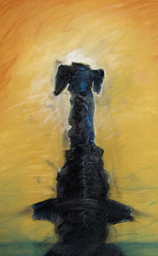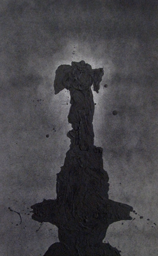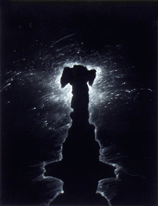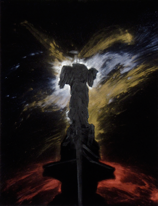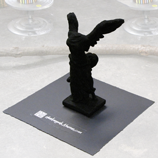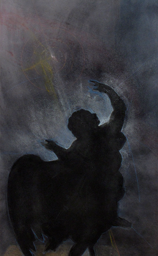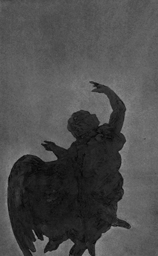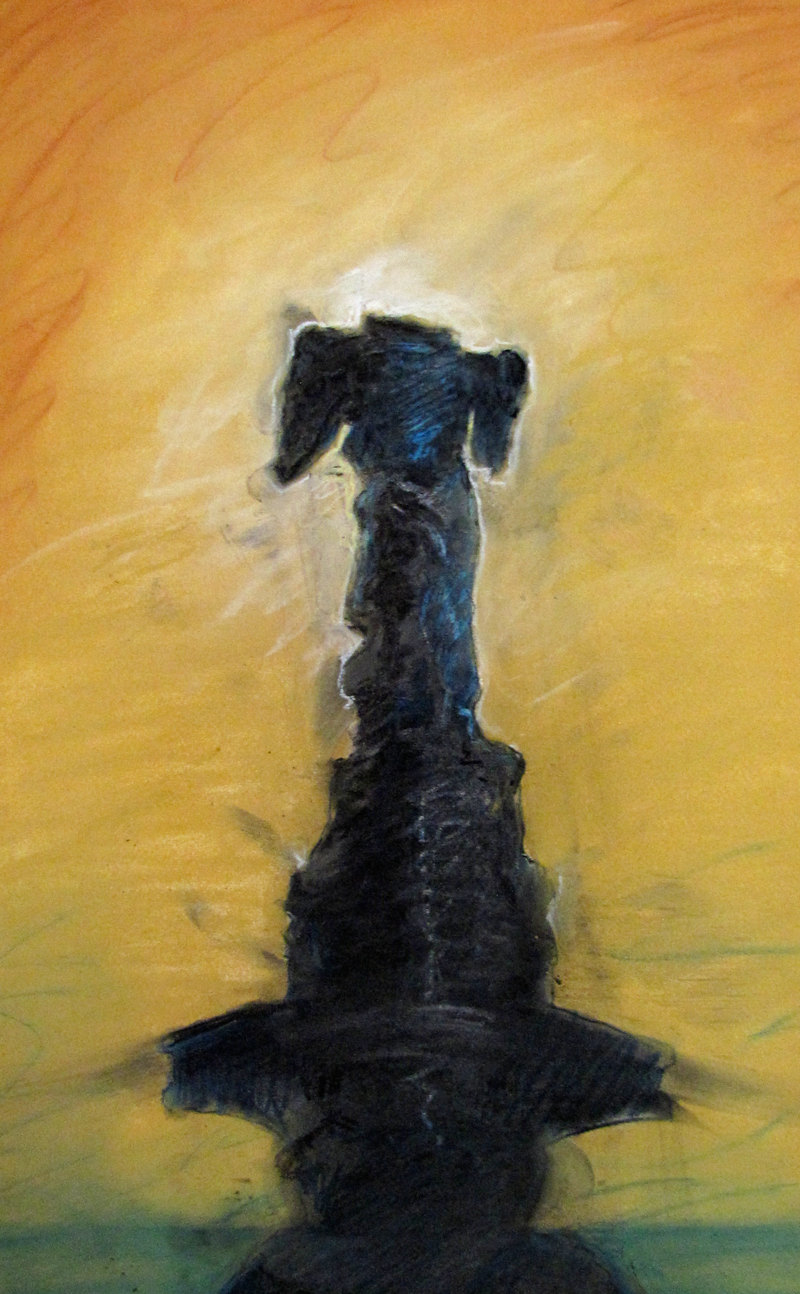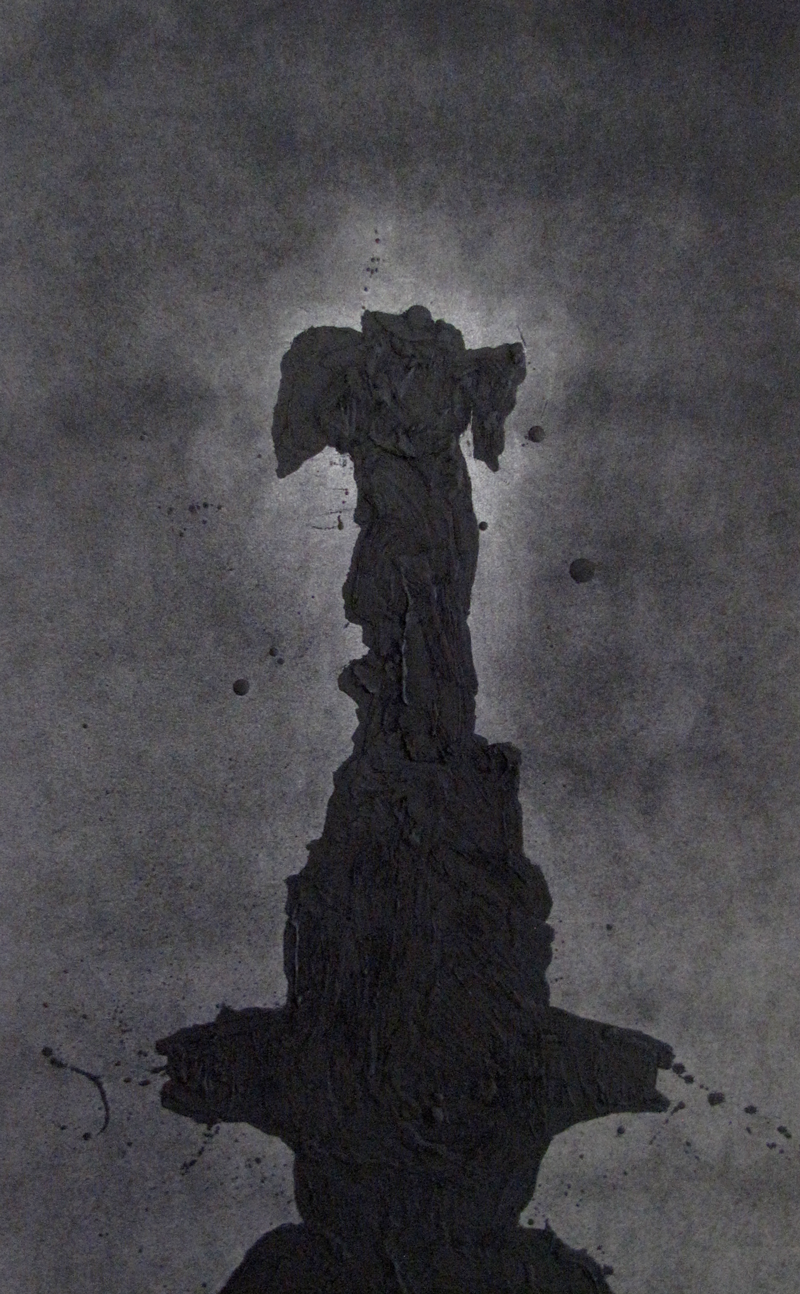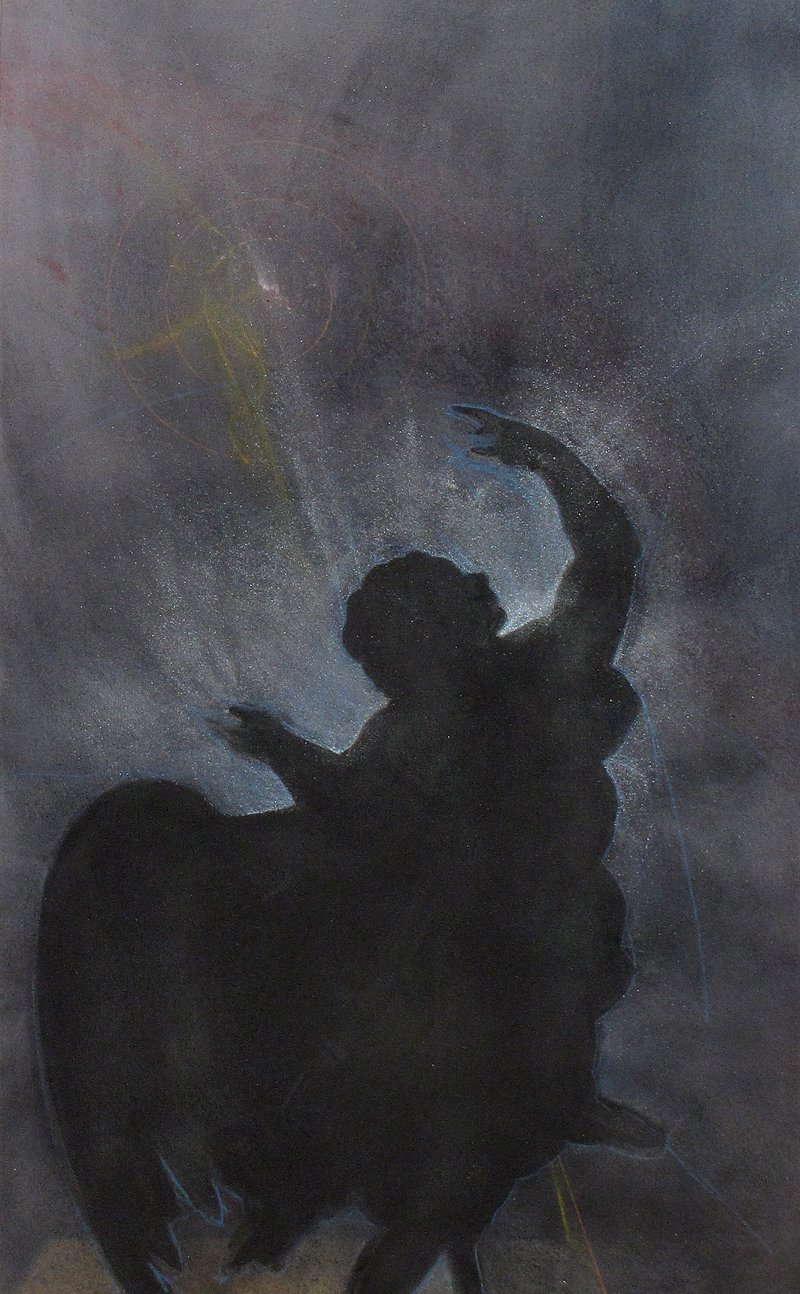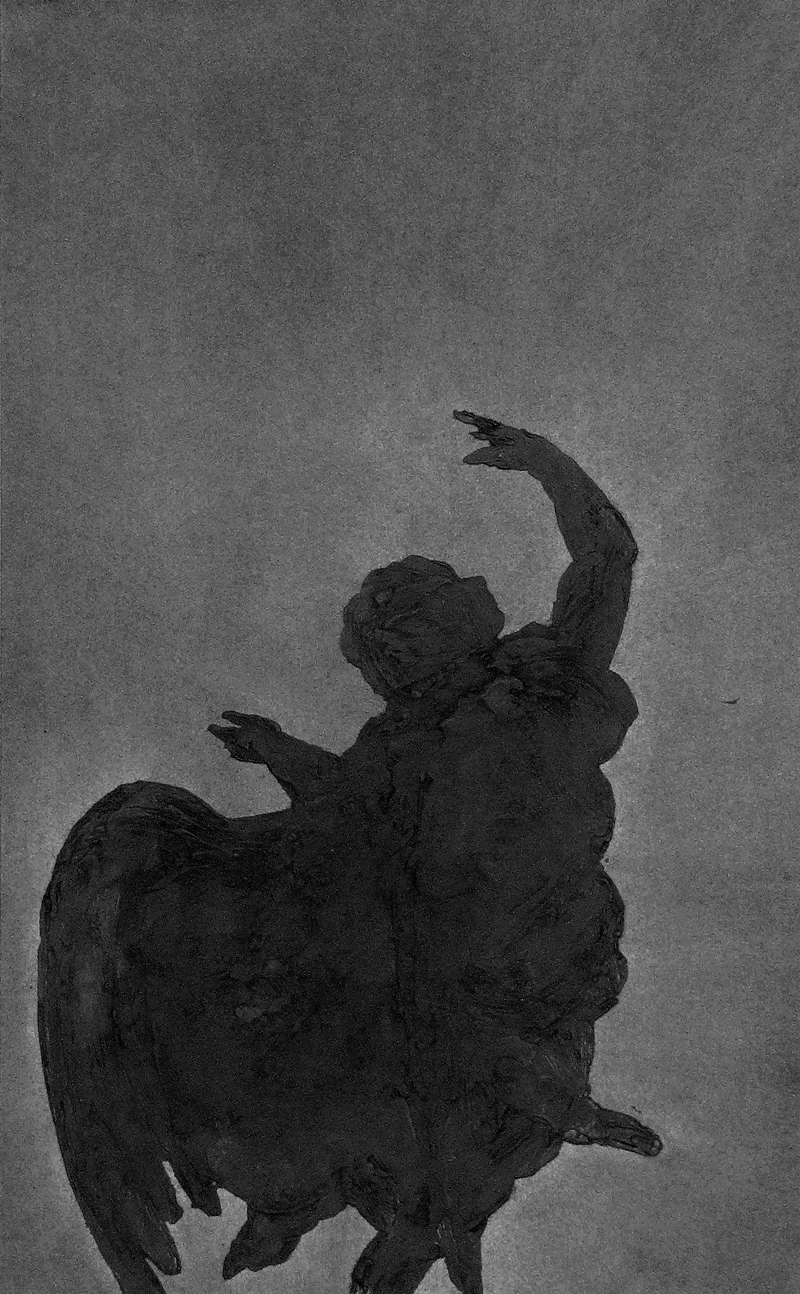Dark Angels
ANGELUS OBSCURUS
A collection of renderings by James Khazar
My wing is ready to fly
I would rather turn back
For had I stayed mortal time
I would have had little luck.
Gerhard Scholem §
“Angelic Greetings”



Mein Flügel ist zum Schwung bereit
ich kehrte zurück
den blieb ich auch Iebendige Zeit
ich hätte wenig Glück.
Gerhard Scholem §
“Gruss Vom Angelus”



Angelic Greetings
I hang nobly on the wall
and look at none
I am from heaven sent
I am an angel-man.
The man in this room is good
but I'm not interested in him
I am the supreme protector
and do not need a face.
In my heart is the city
to which God sent me.
The angel of this sign
has not been ensnared
My wing is ready to fly
I would rather turn back
For had I stayed mortal time
I would have had little luck.
My eyes are full and dark
my view is never empty
I know what I should say
and still do so much more.
I am an unsymbolic thing
which means I am what I am
you turn in vain the magic ring
I make no sense.
Gerhard Scholem §



Gruss Vom Angelus
Ich hänge edel an der Wand
und schaue keinen an
ich bin vom Himmel her gesandt
ich bin ein Engelsmann.
Der Mensch in meinem Raum is gut
und interessiert mich nicht
ich stehe des Höchsten Hut
und brauche kein Gesicht.
In meinem Herzen steht die Stadt
in die mich Gott geschickt.
Der Engel der dies Sigel hat
wird nicht von ihr berückt.
Mein Flügel ist zum Schwung bereit
ich kehrte zurück
den blieb ich auch Iebendige Zeit
ich hätte wenig Glück.
Mein Auge ist ganz Schwarz und voll
mein Blick wird niemals leer
ich weiβ was ich verkünden soll
und weiβ noch vieles mehr.
Ich bin ein unsymbolisch Ding
bedeute was ich bin
du drehst umsonst den Zauberring
ich habe keinen Sinn.
Gerhard Scholem §



Dark Angels series of renderings inspired by Walter Benjamin's reference to “The Angel of History” in his visionary 1940 essay “ On the Concept of History.” In the essay he pays homage to Paul Klee‘s Angelus Novus, and uses his image to create one of the most remarkable metaphors of the Twentieth Century. He describes History as an Angel…
His face is turned toward the past. Where we perceive a chain of events, he sees one single catastrophe which keeps piling wreckage upon wreckage and hurls it in front of his feet. The angel would like to stay, awaken the dead, and make whole what has been smashed. But a storm is blowing from Paradise; it has got caught in his wings with such violence that the angel can no longer close them. The storm irresistibly propels him into the future to which his back is turned, while the pile of debris before him grows skyward. This storm is what we call progress.”
Continued >
This metaphor changes our perception of what an Angel is and can do. Throughout the history of western art, angels have been depicted as beings who are made of light, or who have heavenly power and intention. I find Benjamin's Angel as one who is trapped and in many ways oppositional to the traditional "angelic" view. I see a darker side to angels and want to explore that — if not dark, then at least in opposition to light — side of angels in a series of re-imaginings of angels in western art. I also find it fascinating to work with Angels because of their under-the-surface “rhizomatic” connections to things we don't usually associate with their conceptualization. For example, Satan is a fallen angel, and his name before his fall was called Lucifer, or “light bearer.” Although this relationship is contentious among theologians, it is interesting to see this alternating association between the unfallen bearer of light and the fallen king of darkness. Old testament Angels were sometimes warriors for God. There is an amazing depiction of, I believe, Archangel Michael, on a . .
< Previous
Continued >
mosaic in the Mediaeval cathedral on the Isle of Torcello, standing at the entryway to the last judgment with his wings crossed in front of him and covered with dozens of eyes.* These are the sorts of Angels that I find most interesting.
Angels are much more complex than the New Age "beings of light" and my intent is to explore the flip side of Angels, and try and wrestle back the representation of angels away from the simplistic.
* Refer to the creature in Guillermo del Toro's Hellboy 2, an “Angel of Death” whose wings are covered with blinking eyes.
< Previous
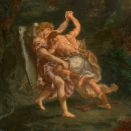
Current
Explorations



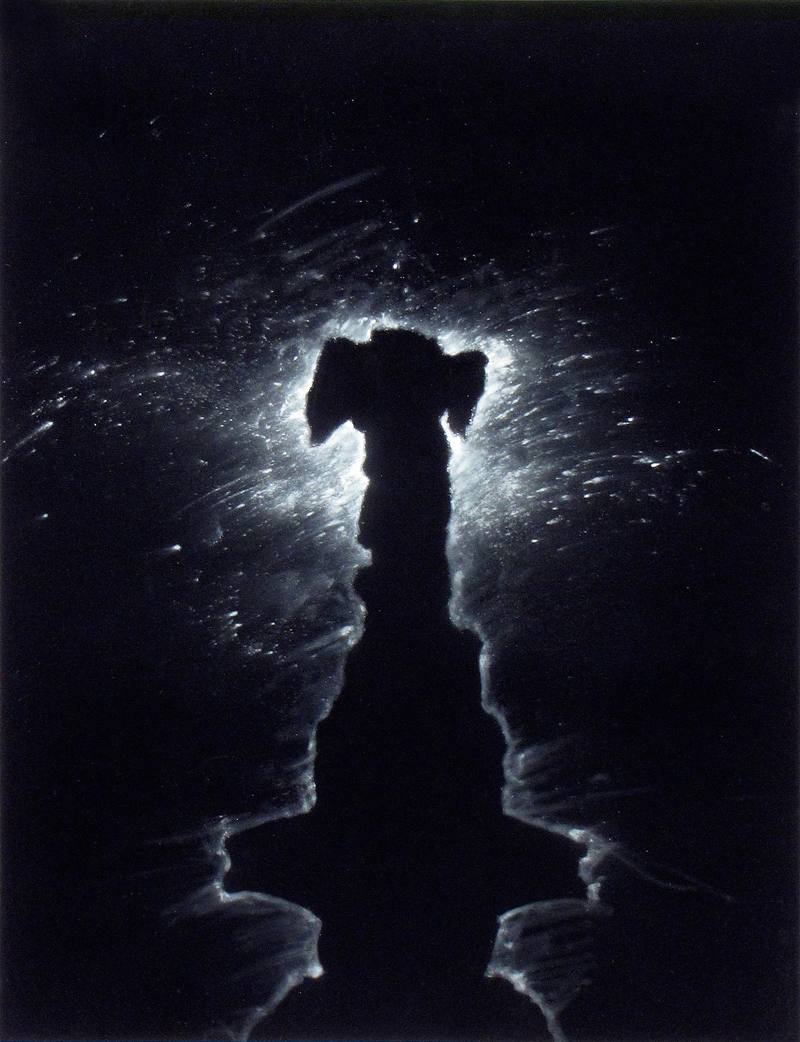



(cc) License.
Winged Victory of Samothrace: Velvet I
26" x 20", pastel on velvet finish paper
3 of 8
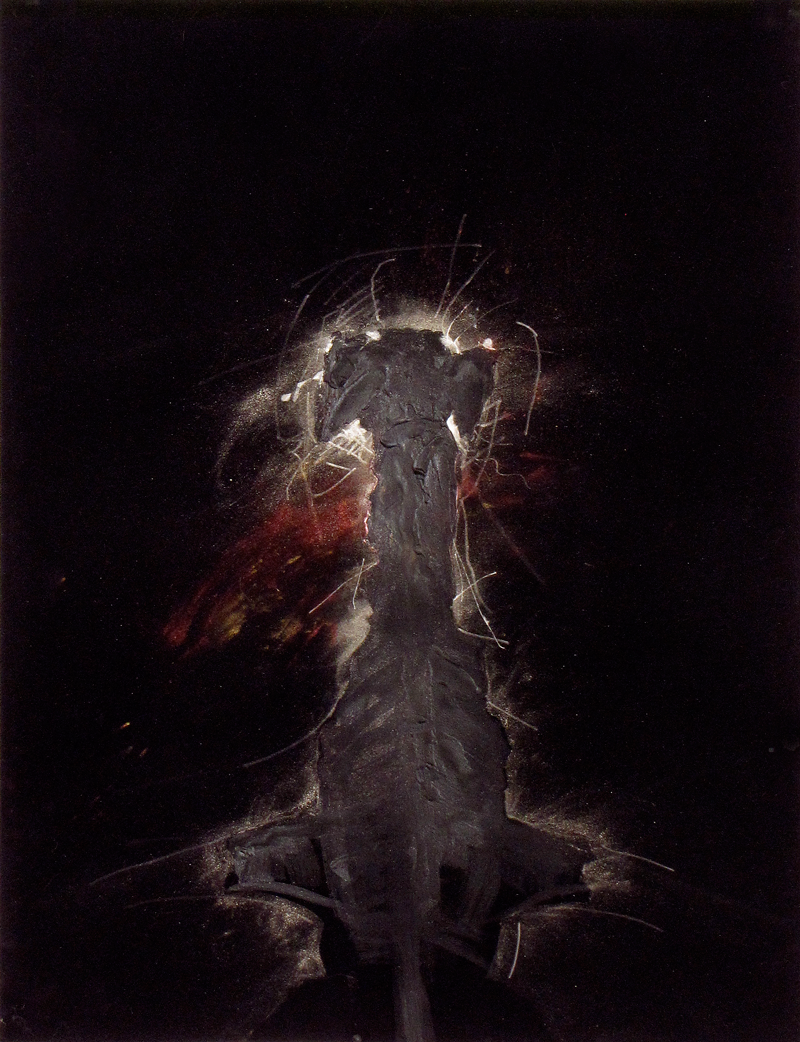



(cc) License.
Winged Victory of Samothrace: Velvet II
26" x 20", pastel and encaustic on velvet finish paper
4 of 8
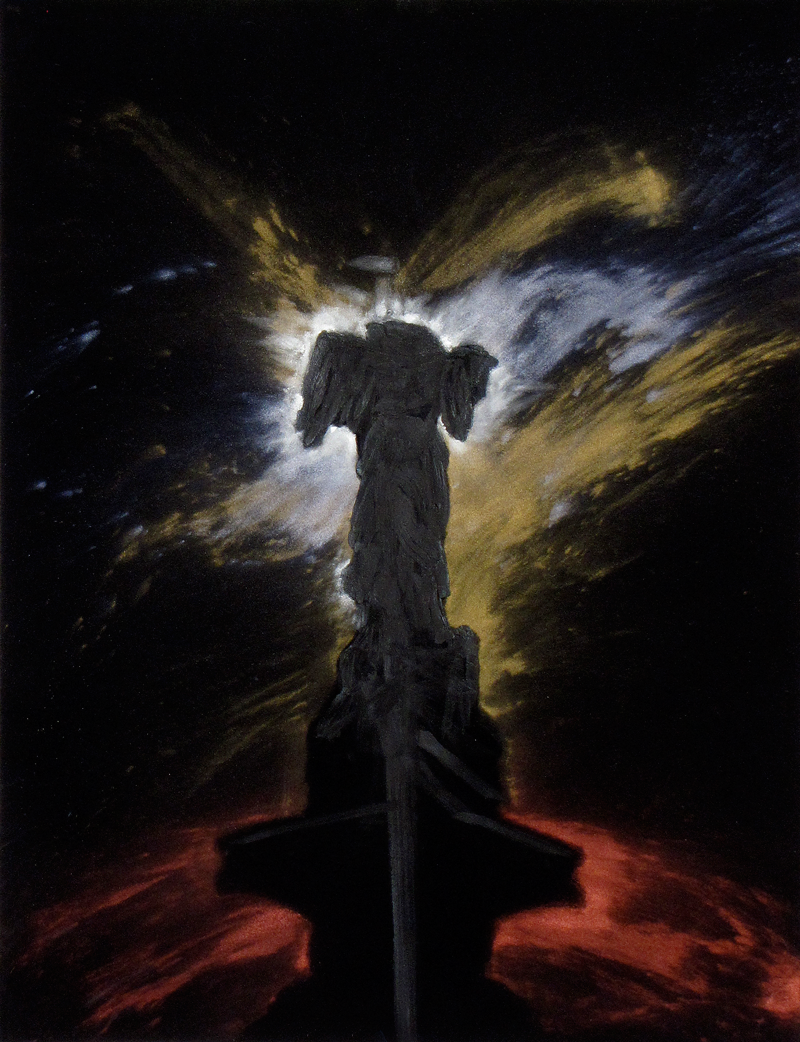



(cc) License.
Winged Victory of Samothrace: Velvet III
26" x 20", powdered metal and encaustic on velvet finish paper
5 of 8




(cc) License.
Winged Victory of Samothrace: Statue
11" x 7" x 7", cast acrylic with suede-tex finish
Shown at The Chain Letter Exhibition, Shoshanawayne Gallery, Santa Monica, California, July, 2011. Curated by Christian Cummings & Doug Harvey
6 of 8
